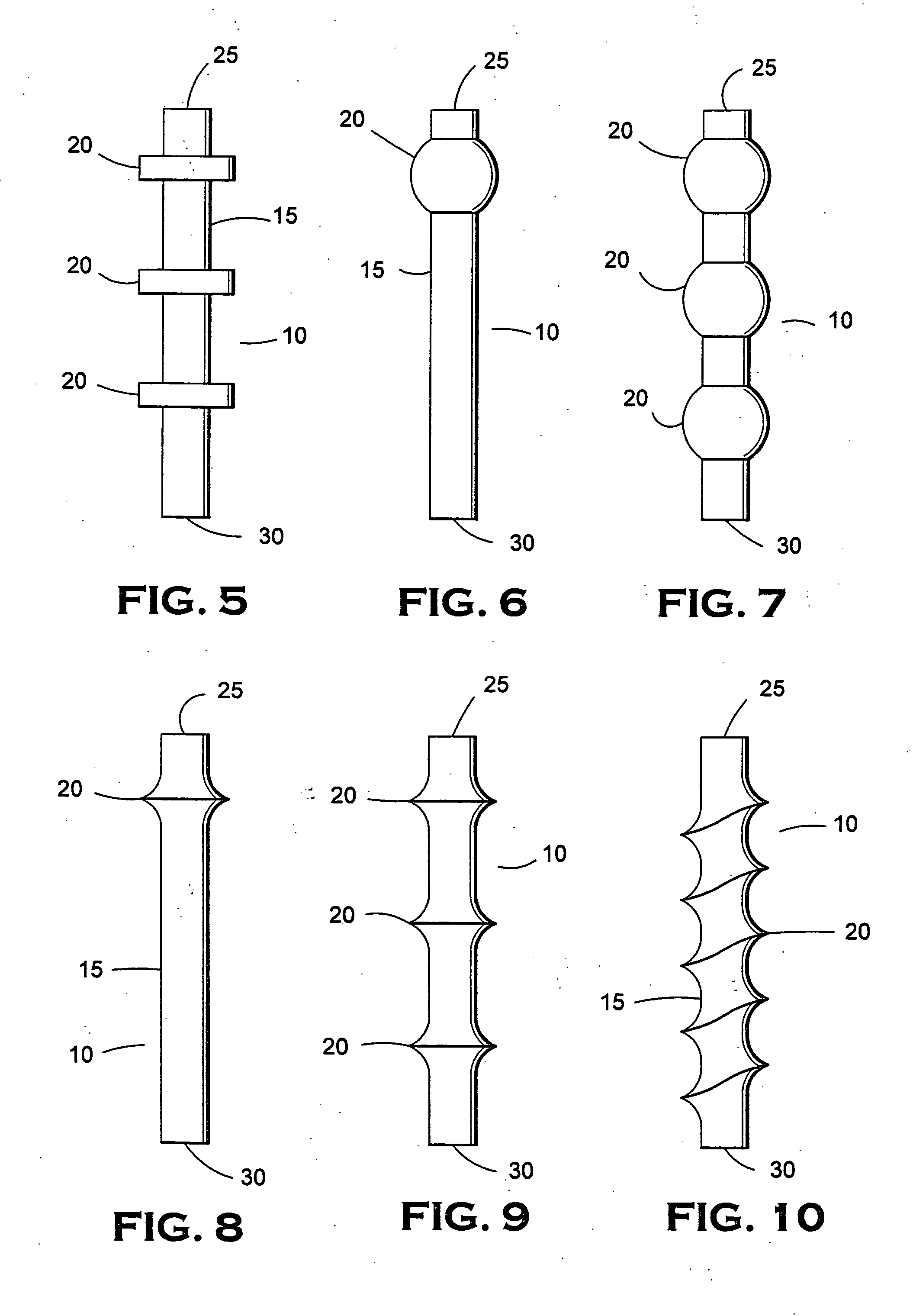Toothbrush featuring bristles with raised annular portions
- Summary
- Abstract
- Description
- Claims
- Application Information
AI Technical Summary
Benefits of technology
Problems solved by technology
Method used
Image
Examples
Embodiment Construction
[0035] The detailed description below is for preferred embodiments and is intended to explain the current invention. It is to be understood that a variety of other arrangements are also possible without departing from the spirit and scope of the invention. Where appropriate, the same numbers may be used in different illustrations.
[0036]FIG. 1 shows the bristle of the present invention, indicated generally by 10. The bristle 10 has a shaft 15 with a raised annular portion 20. The raised annular portion 20 is located intermediate the free end 25 and the fixed end 30 of the shaft 15. The raised annular portion 20 may have a range of diameters and the specific profile has a large number of possible profiles as well.
[0037]FIG. 2 shows a toothbrush 35 having bristles 40 which are consistent with the prior art. The toothbrush 35 is shown in use with the bristles 40 brushing a dental surface 45. The bristles 40 are bent as would be expected and the shafts of the bristles 40 are contacting...
PUM
 Login to View More
Login to View More Abstract
Description
Claims
Application Information
 Login to View More
Login to View More - R&D
- Intellectual Property
- Life Sciences
- Materials
- Tech Scout
- Unparalleled Data Quality
- Higher Quality Content
- 60% Fewer Hallucinations
Browse by: Latest US Patents, China's latest patents, Technical Efficacy Thesaurus, Application Domain, Technology Topic, Popular Technical Reports.
© 2025 PatSnap. All rights reserved.Legal|Privacy policy|Modern Slavery Act Transparency Statement|Sitemap|About US| Contact US: help@patsnap.com



